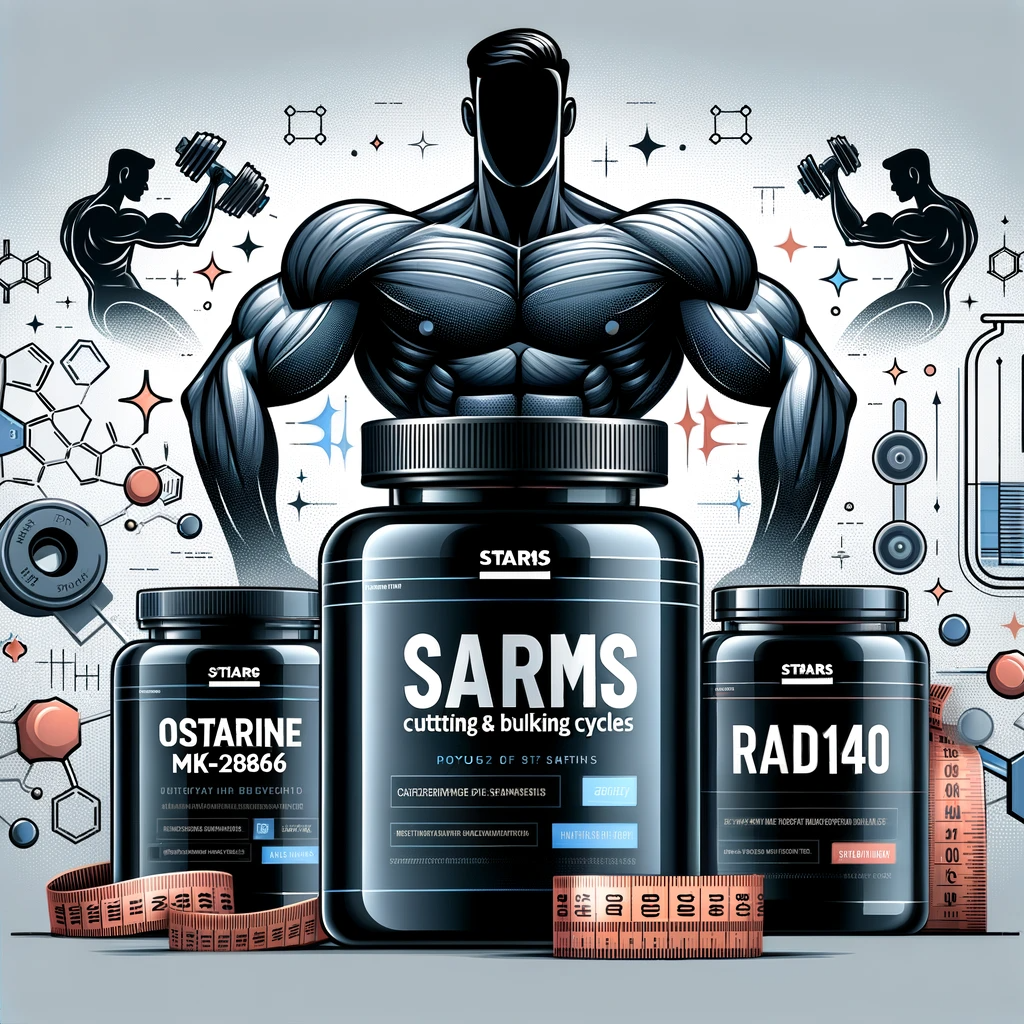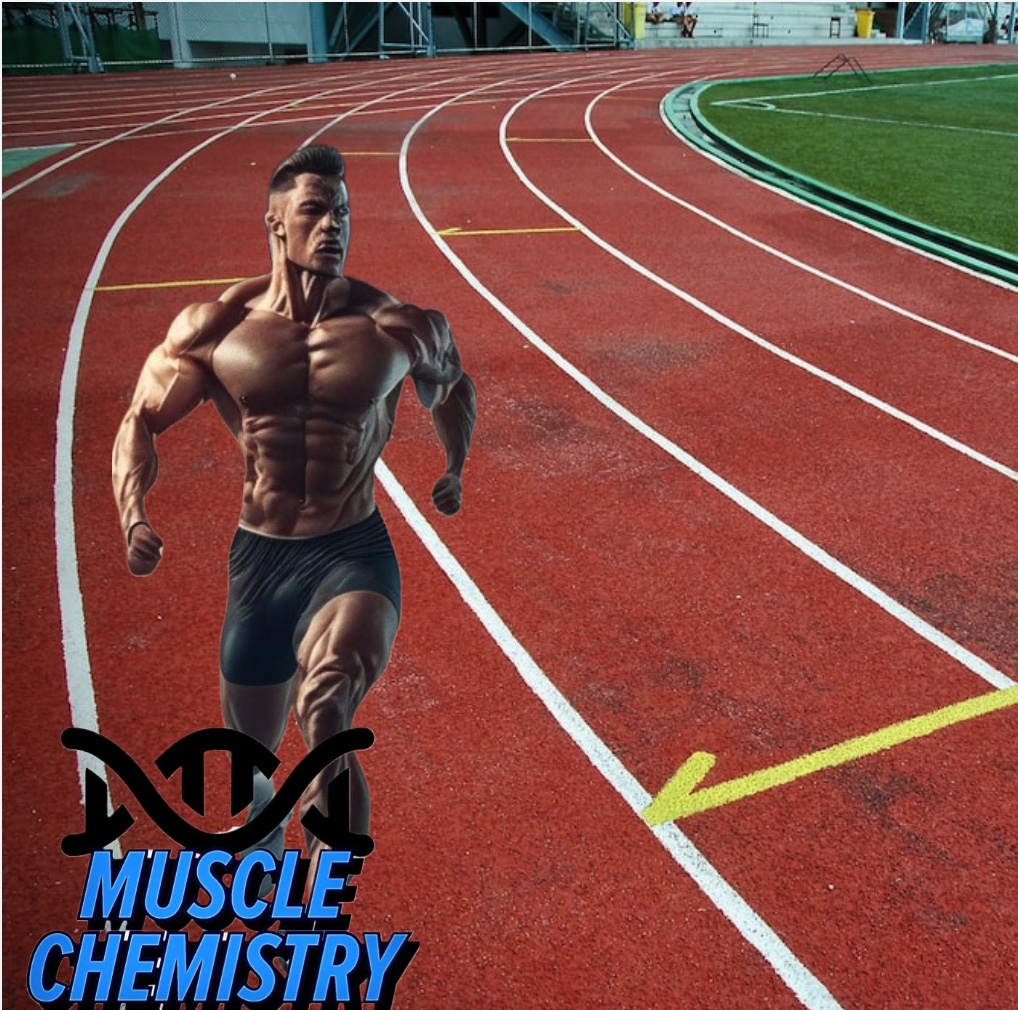Tag: endurance

Maximizing Muscle Recovery and Growth: The Role of ARA-290 Peptide in Bodybuilding
Maximizing Muscle Recovery and Growth: The Role of ARA-290 Peptide in Bodybuilding In the quest for peak physical performance and rapid recovery, bodybuilders and fitness enthusiasts are continually exploring the frontiers of science for an edge. Enter ARA-290, a peptide originally developed for nerve repair, which has recently gained attention in the bodybuilding community for…

MK 2866 – OSTARINE
MK 2866 – OSTARINE: The Definitive Guide to the Revolutionary SARM Ostarine, also known as MK-2866 or Enobosarm, is one of the most studied and widely used selective androgen receptor modulators (SARMs) on the market. Developed for the treatment of muscle wasting and osteoporosis, Ostarine has become a cornerstone in the bodybuilding community for its…

SARM SCIENCES BACK IN STOCK!
BACK IN STOCK Ligandrol, Ostarine, Cardarine, and Rad-140 https://www.musclechemadvancedsupps.com/ 20% OFF Entire Order With Free Shipping! The Power of RAD-140 in Bodybuilding: Benefits, Dosages, and Cycle Durations RAD-140, also known as Testolone, is a selective androgen receptor modulator (SARM) gaining popularity in the bodybuilding community for its potential benefits in promoting lean muscle…

GW-501516 (Cardarine)
GW-501516 (Cardarine) Trenbolones Perfect Match for Lean Gains When it comes to achieving lean gains and maintaining cardiovascular endurance, the combination of Trenbolone and Cardarine (GW-501516) is unparalleled. While bulking season may be the norm for many, some prefer to focus on recomping their physique without sacrificing leanness. This is where the dynamic duo of…

Rucking Basics for Fitness and Fat Loss
There are many different workouts you can use to get fit, lean, and healthy. And, contrary to what a lot of people will tell you, one is not better than the others. While some workouts may burn more calories per hour, the differences are marginal and easily offset by making small adjustments to your diet.
Rather, what separates a good workout from a great one is enjoyment and convenience. If you like what you are doing and can do it regularly, it’s more likely to provide results than the so-called best workout you hate and hardly ever do.
Because of that, it’s worth exploring all your workout options to find activities that fit best into your lifestyle and schedule.
In this article, we lift the lid on rucking, explaining why and how to do this popular workout.
What is Rucking?
Rucking is a military-inspired cardio workout that involves walking or hiking while carrying weight. In military circles, a ruck is a rucksack or backpack, so rucking means walking with a bag on your back.
As a cardio workout, rucking works your heart, lungs, and circulatory system. It’s an effective calorie burner and will help strengthen your core and legs. It’s a viable alternative to regular walking, jogging, running, cycling, etc., and provides a simple yet effective way to burn calories, get lean, improve your muscular endurance, and get fit.
Rucking is simple, low-tech, and effective, requiring no special athletic skills; if you can walk, you can ruck!
However, like most workouts, there is a right way and a wrong way to ruck. Mistakes can leave you exhausted and miles from home. That said, rucking is such a simple workout that such mistakes are easy to avoid, especially if you follow the guidelines in this article.
The Benefits and Advantages of Rucking
Not sure if rucking is the right workout for you? Consider these benefits and advantages and then decide!
Improved cardiovascular fitness
Cardiovascular fitness is your ability to take in, transport, and utilize oxygen, typically expressed as your VO2 max. Walking doesn’t usually have much of an effect on your cardiovascular fitness as the intensity is too low. However, that all changes when you strap on your ruck.
Rucking with weight will increase your heart rate as much as running, cycling, and other cardio workouts. As such, it can help you develop an impressively high level of cardiovascular fitness.
A higher VO2 max will make you more fatigue-resistant, help you recover faster between sets of strength training, improve your athletic performance, and may even help you live a longer, healthier life (1).
Stronger, more enduring legs
Walking briskly with a weight on your back feels very different from strolling without a backpack. It challenges your legs in a whole new way and will develop your muscular strength and endurance. Walking up and downhill is especially challenging, and as your heart rate soars, so too does the fatigue in your legs.
You can expect to feel rucking in your entire lower body, including your quadriceps, hamstrings, glutes, calves, and core.
It’s no coincidence that soldiers and long-distance hikers often have very well-develop legs. You can usually spot people who walk a lot by their well-developed (and often super-defined) calves.
An effective calorie burner
Several factors determine how many calories you’ll burn while rucking, including gender, age, speed, duration, and how much weight you are carrying. However, rucking could potentially burn as many calories as running. Walking with a weighted backpack will certainly burn more calories than walking without one.
As such, rucking can contribute to your weekly caloric expenditure and help you burn fat and lose weight. However, like all workouts, you’ll only lose weight if your diet is on-point.
Good for your posture and core
Walking is good for your posture. Firstly, it gets you up off your butt, onto your feet, and away from your keyboard or screen. Simply standing up straight can help fix your desk slouch and nerd neck.
Secondly, walking stretches and mobilizes your hips and lower back. This is also beneficial for your posture.
Finally, wearing a heavy backpack engages your deep core muscles. You must use your core to stop the pack from pulling you backward. A stronger core will also enhance your posture, as well as lowering your risk of back pain.
Accessible
You need very little equipment to start rucking. In fact, you probably have everything you need already (check out the next section for details). That means you can get started immediately and without having to buy any special equipment.
Rucking also requires no athletic skill, so it’s ideal for those with no sporting background.
As far as where to ruck, you can go anywhere you like. Put your backpack in your car and drive to the countryside or ruck around your neighborhood. You can ruck to and from work, ruck to the store to buy your groceries, or go rucking with your kids or dog – it’s a very convenient and accessible way to work out.
Remember, the best workout is the one that you can do frequently and that you enjoy. Rucking removes many of the barriers to regular exercise.
Low impact
While running is a popular cardio workout, it is not without risks. When you run, your feet hit the floor with a force equal to several times your body weight. All that impact can have an adverse effect on your feet, ankles, knees, hips, and lower back, plus all the associated muscles, tendons, and ligaments.
There is a reason that many athletic injuries are prefixed with the word running – such as runner’s knee and runner’s hip. Running-related injuries are very common.
In contrast, rucking is a low-impact activity, so despite the added weight, it puts far less stress on your joints. With a lower risk of injury, you are less likely to miss workouts because you are hurt.
Low-impact rucking is also an excellent workout for people who are overweight that would otherwise find running uncomfortable or risky.
Scalable
Rucking workouts can be modified to match your current fitness level. Start light and short, gradually increasing the weight and distance as you get fitter.
With this in mind, you can also ruck in a group of people with different abilities. For example, less fit individuals carry light packs, while the fitter members of the group carry heavier packs. With a little trial and error, everyone should be able to have a similar workout.
Sociable
Leading on from the point above, while there is nothing wrong with rucking alone, this workout is ideal for couples, families, and groups. You can ruck with your kids, your pets, your partner, or your friends.
If you enjoy group exercise classes but prefer to work out outdoors, rucking with friends could be perfect for you.
A functional workout
Functional workouts and exercises develop fitness that you can use outside of the gym. They prepare your body for the demands of daily life and sports.
For example, squats are very functional because the squat is one of the movements most people do many times each day. In contrast, machine leg curls are less functional because they aren’t an everyday movement.
Rucking is simply walking with weight, so it’s a very functional exercise. Humans have been doing it since they learned to stand on two legs.
Gear for Rucking
While rucking is a very low-tech, no-frills sort of workout, you still need a couple of things to do it.
A rucksack
The first thing you need to start rucking is a ruck, better known as a rucksack or backpack. Ideally, your ruck should be strong and sturdy, with a hip and chest strap to keep it secure on your back. The back panel and shoulder straps should be padded for comfort.
You don’t need a special rucking backpack, although such things are available. Rather, a standard hiking pack will suffice and is usually much cheaper.
Alternatively, you can wear a weighted vest. However, you’ll still need to find a way to carry water on your ruck, especially on longer workouts.
Weights
You can load your ruck with just about anything you have available. Small-denomination weight plates and dumbbells are a good option, as are tightly-sealed water bottles, bags of sand or gravel, rocks, books, and canned goods.
However, ensure that whatever you put on your ruck doesn’t poke you in the back. What started off as a mildly annoying pressure point can turn into a major pack rash when you start to get hot and sweaty. Wrap your weights in towels or old workout mats if you need extra padding.
You don’t need to buy specialist rucking shoes or military boots for your ruck workouts. However, your footwear needs to be supportive, cushioned, and comfortable. Trail running shoes are a good option, and walking shoes are another.
Regardless of what you choose, make sure your shoes don’t rub, as blisters can bring even the toughest soldier to their knees. This is not the time to wear new, untested shoes. Instead, stick with footwear you are familiar with and that you know are comfortable.
Appropriate clothing
The most important rule for rucking clothing is to dress for the elements. Wear layers when the weather is cold, and wear less on warm days to avoid overheating. Grab a wide-brimmed hat to protect your face from strong summer sunshine and warm gloves and a beanie in winter.
Remember, too, that the weather can change, and so too will your body temperature as your workout progresses. Make sure you can add or remove layers as conditions and your body temperature dictates.
And that’s all you really need to start rucking – a backpack, weights, shoes, and suitable clothes. That said, there are a couple of additional items that may enhance your workouts:
Water bottle – rucking is thirsty work. Wearing a rucksack means that heat cannot escape from your back, and your body temperate will probably increase more than usual. As a result, you’ll probably sweat more, which can lead to dehydration. Carry a water bottle and drink from it little and often to stay hydrated.
A smartwatch – handy for tracking steps, distance, and calories burned. Some can also be programmed with your rucking route.
Navigation app – downloading a navigation app to your phone means you can create and follow pre-planned routes. Navigation apps are an excellent alternative to a traditional map and compass. However, if you plan on rucking in wild country, you should also carry a map as phone batteries die, screens break, and apps crash.
Earbuds – rucking is a great way to unplug from technology and enjoy some time alone or with friends. However, if you prefer to work out to music or want to remain contactable during your ruck, earbuds will be invaluable. However, don’t turn the volume up too high, or you could fail to hear upcoming hazards, such as traffic.
First-aid kit – if you are rucking far from the maddening crowds, a first-aid kit is a must. While rucking is a very safe workout, you could still trip and fall, sprain an ankle, get snake-bit, get a blister, or otherwise get hurt. A first-aid kit means you can patch yourself up and get home safely.
Trekking poles – walking with trekking poles is very popular in Nordic counties. The poles are helpful for balance and extra traction on rough terrain and let you take some of the weight off your legs and put it on your arms. Using trekking poles turns a lower-body activity into a full-body workout.
How to Get Started with Rucking
While rucking is simple and accessible, it’s still possible to get it wrong and turn what should be an enjoyable workout into a painful nightmare. Follow these steps to ensure your first few rucking excursions go as smoothly as possible.
Pick your distance carefully
Walking with weight is much more challenging than walking while unencumbered. Short distances feel much further when you’re wearing a heavy pack. With that in mind, be conservative and keep your first few rucks relatively short. Choose distances you can cover comfortably in an hour or less, i.e., 2-4 miles.
While you’ll soon work up to rucking faster and further, not going too far too soon will make your first few outings much more enjoyable.
Be conservative with your ruck weight
While it might be tempting to load all the weight you can into your backpack, carrying too much weight too soon could put you off rucking for good. Heavy loads get heavier as you start to feel tired, and your shoulders and back probably aren’t used to being loaded down with a heavy pack.
So, start with no more than about 10% of your body weight. This will be enough to be challenging but not so heavy that you feel crushed under the weight of your backpack. If in doubt, use less weight rather than more. You can always increase the load on subsequent ruck outings if your pack isn’t heavy enough.
Start slow
While soldiers ruck at four miles an hour or faster, you don’t have to. In fact, you should start slow, feeling like you could go more quickly if needed. You can increase your speed as you get used to walking with a weight on your back. However, remember it’s the weight that makes rucking such an effective workout, and you don’t need to walk at top speed or break into a run for it to be effective.
Choose easy to moderate terrain
Rucking in wild countryside is an awesome workout, but uneven terrain and steep inclines can be too challenging for beginners. So, for your first few rucks, stick primarily to flat, easy paths and trials, saving the rough stuff for when you are more experienced.
Enjoy it!
Don’t turn your rucking workout into a race. Take your time, look around, open your ears, and enjoy your surroundings. Breathe deeply and easily, relax your shoulders and arms, and even try some moving meditations. Stay off your phone, and use your ruck as an opportunity to decompress.
Rucking Basics for Fitness and Fat Loss – FAQs
Do you have a question about rucking? No problem, because we’ve got the answers!
1. How fast should I walk when rucking?
There is no set speed for rucking. However, most people average between 3-4 miles per hour or 15-20 minutes per mile. Your rucking speed depends on the terrain, your fitness, how much weight you are carrying, and how far you plan on walking.
Adjust your speed so you are slightly out of breath but comfortable enough that you can maintain your pace for the duration of your ruck. However, if you cannot maintain three miles an hour, you may be carrying too much weight.
2. How far should I ruck?
Like rucking speed, distance is also dependent on numerous factors, including your fitness and the time you have available. If you are unsure how far to ruck, start with a couple of miles and increase gradually as you get used to the demands of the workout.
It’s usually best to under-commit and over-deliver, so you finish your workout feeling like you could have done more. This is a much better approach than a “death march” that you can only just complete and never want to repeat.
3. How often can I ruck?
While rucking is low impact, it will still take a toll on your muscles and joints, especially if you walk fast and with heavy loads. As such, you should probably do 3-5 rucking workouts per week.
While you could do more than this, e.g., every day, the accumulated stress could lead to aches, pains, and injuries.
So, you could do one “big” ruck per week, perhaps at the weekend, plus a couple of shorter rucks spread throughout your week. Experiment with different training frequencies to see what works best for you.
4. Do I need a specialist backpack or shoes for rucking?
While there are companies making and selling rucking-specific shoes and backpacks, you don’t need them for this style of training. In fact, all you really need is a hiking daypack and comfortable, supportive footwear, like your usual athletic shoes.
That said, if you plan on rucking over rugged terrain, a pair of hiking shoes may be beneficial.
So, while you can buy a specialist rucking pack and shoes, you don’t need them. If you are new to rucking, use the equipment you already have, and then upgrade if you make rucking part of your regular workouts.
5. Is rucking good for weight loss?
Like all types of exercise, rucking can help you lose weight when combined with a sensible, sustainable diet. It burns a similar number of calories as running. Still, the impact is less, so you may be able to do it longer and more often, making it potentially more effective for weight loss.
However, what makes rucking so great is how it requires no specialist equipment, and you can do it almost anywhere and anytime. The best workouts for weight loss are the most accessible and convenient, as you need to do them frequently and consistently for them to be effective.
Long story short? Yes, rucking is good for weight loss!
Closing Thoughts
Getting fit and losing weight often seem like complicated pursuits, but really, they don’t have to be. In fact, all you need to do is toss some weights in a backpack and go for a brisk walk. Eat a few more salads and a bit less junk food, and your body will start burning fat for fuel.
You see – not complicated at all!
That said, simple doesn’t mean easy, and working out and eating healthily are often incompatible with our modern, hectic lifestyles.
That’s why convenience and accessibility matter; the easier something is to do, the more likely you are to do it. Rucking is exceptionally simple yet extremely effective, providing a workout you can do almost anywhere and anytime.
So, if you are looking for an excuse-free workout, try rucking. It’s no better than any other type of training, but nor is it any worse. Instead, it’s just another tool you can use to lose weight and get fit.
References:
1 – Strasser B, Burtscher M. Survival of the fittest: VO2max, a key predictor of longevity? Front Biosci (Landmark Ed). 2018 Mar 1;23(8):1505-1516. doi: 10.2741/4657. PMID: 29293447. https://pubmed.ncbi.nlm.nih.gov/29293447/



